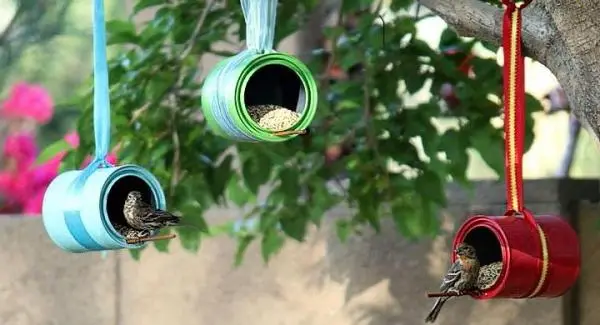Making an ecological garden requires a very different approach than making a conventional garden. The eco-friendly approach is the only, but essential difference, which ultimately marks the result in aspects such as the distribution of space, the use of recycled material, irrigation with rainwater, the use of organic seeds or, for example, the promotion of indigenous biodiversity .
But where to start? Once we choose the plants, whether they are organic seeds, cuttings are taken from nature, or plants with a bio certificate, we will plan the space intelligently, trying to combine your needs with efficient use of irrigation and, if we wish, also with the ornamental effect. . Keep reading this article if you want to know how to make an ecological garden.
Sow and fertilize
The idea is to ensure that the plants that need little irrigation, which at first would be the most recommended, are grouped in sunny areas , and leave the shaded spaces for those that need more intensive irrigation. In this way, we will avoid wasting water and help the plants with the greatest need for water to survive the summer.
In addition, it is important to discard the seasonal plants so as not to have to change them and, if possible, we will choose the native species or, even better, that are also in danger of extinction.
Choosing the seeds for our garden
The choice of organic seeds, on the other hand, guarantees that they have not suffered genetic modifications or alterations due to fertilizers, pesticides or other artificial treatments.
Each plant has a recommended sowing time, but in general we keep in mind that we will save more water by doing it in autumn , because this way they will have time to grow until the following spring and summer, so we will not have to water as much to grow.
Soil type
The type of soil also influences a greater or lesser frequency of irrigation, as well as the need for fertilizer. It is essential to know the characteristics of the land to find out if it has good drainage and what type of compost we have to create at home to compensate for the lack of organic matter.
In case of buying the land, let’s choose the ecological one. Some have vermicompost and drain water in an ideal way, and the pots are better made of natural clay or, why not, let’s recycle old furniture or objects or pallets to make original pots or planters.

Water and drive away pests
The drip irrigation system is suitable for sandy soils and, on the other hand, if it is clayey, irrigation will be frequent and in little quantity. Likewise, the collection of rainwater in specific drums will be a very interesting solution for the health of the plants and to save water.
Fighting pests without using chemicals can seem like an impossible thing. However, there are green alternatives that combat them in an ingenious way. Although there are organic products on the market, homemade tricks work well.
Crush eggshells or ash and sprinkle them on the ground, make natural pesticides by mixing vinegar, onion, garlic in different proportions or cover a plant circumstantially with a fine cloth (type of grid, like the ones used to protect fruits), are some tricks that work.
If the situation gets out of control, let’s look for organic products that are safe if applied to edible plants. On the other hand, as prevention, strategically choosing certain types of plants that repel some or other types of insects is also effective.

Attract biodiversity
That’s right, fighting pests by creating a certain ecosystem, on the one hand will allow us to take advantage of the predatory function of the insects that come and thus achieve a general balance, while on the other we will attract wildlife.
Just as we promote native plants, their thing is to attract wildlife to our garden . No, I do not mean wolves or wild boar, but squirrels, pollinating insects, beetles, small reptiles, amphibians, dragonflies, birds, etc.
The large stones piled up, the natural ponds are hiding places that amphibians and small animals will welcome. And, of course, if we want to help our friends the bees, in our garden they will find pesticide-free flowers where they can drink happily. In general, they can be attracted to any flower, just like butterflies, but we can also choose some that they especially like.

